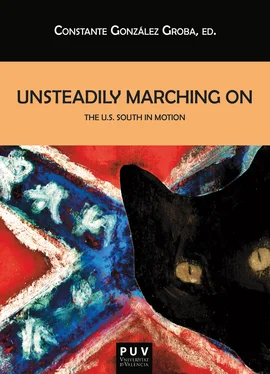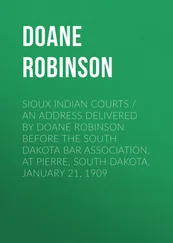Mark Newman uses archival records, diocesan newspapers, pamphlets and interviews for his essay on the positioning of white Catholics in the South with respect to civil rights. He provides precious information about the progressive minority who urged white Catholics to reject segregation, as well as the religious and secular arguments used by segregationists to support Jim Crow. The ranks of progressive white Catholics in the South included some migrants and some members of northern religious orders assigned to the region. The progressive circles included bishops, priests, nuns, editors of diocesan newspapers, faculty at seminaries and Catholic higher educational institutions, as well as male and female laity. The progressives propagated their position through sermons, pastoral letters, articles in the diocesan press, etc. Sometimes they met and cooperated with civil rights organizations, and a few took part in the protests. Some of the seeds sown by the progressives sprouted, leading some to revise their views on segregation, whereas many accepted the change reluctantly and only on the instruction of their prelates or priests. Newman provides a well-researched account of the progressives’ motivations, of their religious and secular arguments, activities, and influence.
In her essay, Sharon Monteith straddles the civil rights movement and the Caribbean South. She describes her analysis of Trinidadian Elizabeth Nunez’s novel Beyond the Limbo Silence (1998) as “an attempt to reconfigure aspects of the civil rights movement in the southern United States by shifting its meaning further south.” In her novel, Nunez imaginatively links Mississippi’s Freedom Summer project of 1964 with the history of a Trinidadian family and with images of Voudon, Obeah and Calypso, and explores the intersections of the long history of colonial oppression in the Caribbean and the wounds of racial discrimination in the US South. Nunez’s incursions into the surreal are for Monteith “both an unusual and a risky literary strategy when sensitivity and fidelity to the experiences of civil rights workers is a structuring principle of many civil rights fictions.” In a novel in which Nunez draws from her own experiences as a foreign student in the US, three Caribbean students in a college in Wisconsin engage in discussions and debates about how each may best help the cause of civil rights. Monteith relates aspects of the novel to John Lowe’s concept of “Calypso Magnolia,” which refers to fictions in which different cultures overlap and to the transnational counter-narratives that challenge previous assumptions about “nation” or “region.” Monteith believes that “[i]n extending a tragic and traumatic moment in the civil rights movement beyond regional and national boundaries, Nunez is inventive if not entirely successful in integrating the historical with the surreal.” She also argues that Nunez’s novel might fruitfully be read alongside Wilson Harris’s creolization theories, whereby histories, fables and myths serve to support those groups who resist and survive practices of victimization. Monteith concludes that “ Beyond the Limbo Silence is a coming-of-age story, a Bildungsroman, and it may, of course, be read as a memorial to the civil rights activists who died for the struggle but it is more successful as a sad and gentle critique of cultural blindness.”
Youli Theodosiadou’s contribution provides a most valuable example of the ways in which history can function as emplotted narrative and shows how Thulani Davis’s civil rights novel 1959 gains its power from history, in that it focuses on the issue of school integration and its influence on the child narrator-protagonist. The novel skillfully incorporates pivotal historical incidents of the civil rights movement such as the confrontation at Central High in Little Rock, Arkansas and the sit-in strategy launched by black students in Greensboro, NC, in February 1960. When the protagonist, Willie Tarrant, hears Martin Luther King speak during one of his visits to her hometown of Turner, Virginia, she feels empowered and realizes that she too can come to share in the American Dream. She also realizes that growing up black in the US South entails a complex set of parameters that merge the political with the personal. Theodosiadou skillfully analyzes the ways in which Davis blends the historical with the fictional to create a potent coming-of-age narrative that not only captures a pivotal phase of American history but also successfully negotiates the connection between place and history. As Theodosiadou concludes, Thulani Davis “constructs a verbal monument so as to remind us that history cannot be suppressed or forgotten.”
Religion has always been a crucial factor in the culture of the American South. The fifth section of the current volume contains two essays on southern religion, one historical and the other literary. The Second Great Awakening which began in the early 19 thcentury was a national phenomenon that resulted in significant growth in evangelical protestant denominations. In his essay, David Goldfield explores the denominational sundering caused by slavery, which made southern and northern evangelicals grow apart, a separation that was manifested most blatantly in the sectional break-up of the Baptists and Methodists in the mid 1840s, with slavery as a major cause for the rift. Before the Civil War, ministers were more influential in moving public opinion and the church was more entangled in matters of state in the North than in the South. But after the war, and because of it, everything changed; the South became the most religious region of the country, whereas northerners, as Goldfield says, “did not abandon their faith, but they placed it within the broader context of a rapidly urbanizing and industrializing society.” If northerners in the late 19 thcentury were more keen on making money in a capitalistic world that was becoming more secularized by the day, southerners, as Goldfield argues, “integrated evangelical Protestantism into every aspect of their culture and politics,” to the point that many considered both secession and slavery as divine blessings that made southerners a chosen people attacked by northern barbarians. After the war, the southern church became a major source of comfort to the defeated and enabled white southerners to rationalize defeat as spiritually strengthening and eventually redeeming. While northerners relegated religion to a subordinate role, white southerners came to sanctifying the past, and their church incorporated the creed of the Lost Cause.
Southern women had always been more devout than the men. After the war they intensified their role as guardians of memory. Goldfield explains: “As history blended into faith, and as the boundaries between public and private spheres in the South became indistinct, women became the attendants of sacred southern memory.”
In her autobiography Killers of the Dream (1949), Lillian Smith likened southern evangelist preachers to political demagogues because both “won allegiance by bruising and then healing a deep fear within men’s minds.” According to Smith, those preachers of fire and brimstone “believed their way of salvation was ‘right,’ as did the old circuit riders, and could not conceive of another way of avoiding destruction” (Smith 103). Ineke Bockting addresses the tragic and often self-destructive consequences of southern religious fundamentalism as reflected in Peter Taylor’s verse story “The Hand of Emmagene,” in which a girl commits a desperate act of self-mutilation as a consequence of the puritanical religious outlook of a family and a congregation prone to literal interpretations of the Bible. Bockting reexamines the relation of the story to southern Gothic and analyzes the formal and thematic liminalities in Taylor’s story, emphasizing the aspects that carry the story beyond the southern Gothic into the grotesque. In her discussion of a story that asks the reader to accompany the protagonist on her hard road to salvation, Bockting pays close attention to the stylistic and narratological aspects of the text in order to bring out the way in which empathy is created, thus making the reader join the unfortunate traveler on this hard road.
Читать дальше












